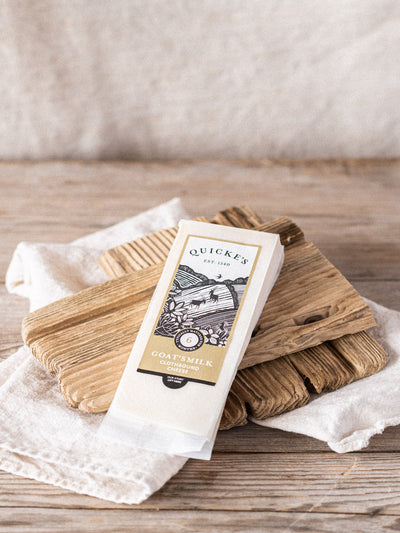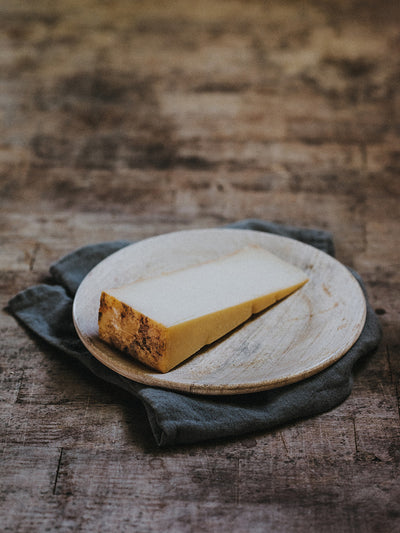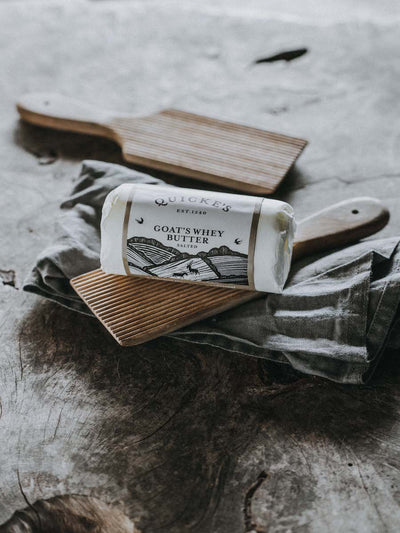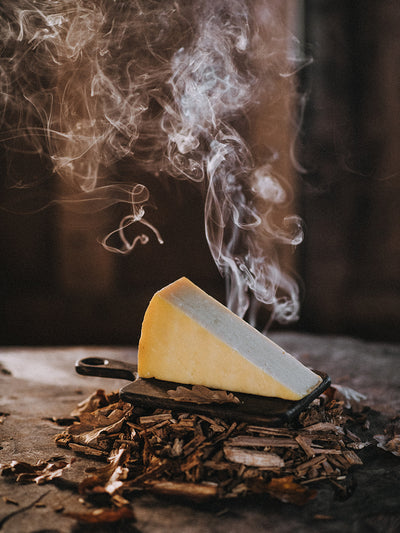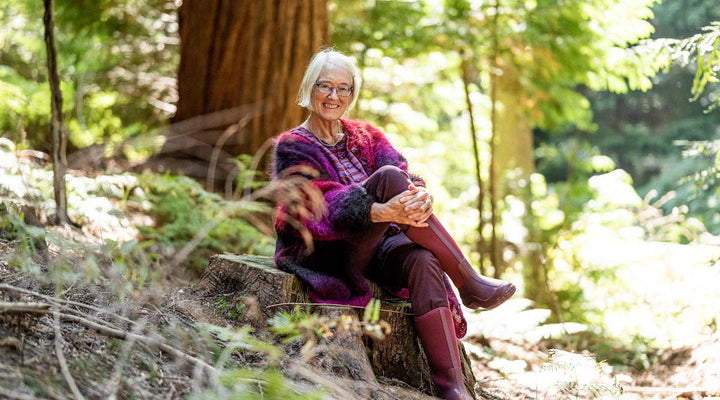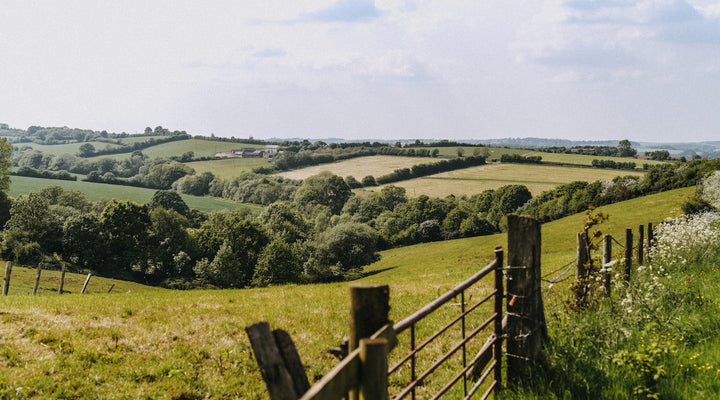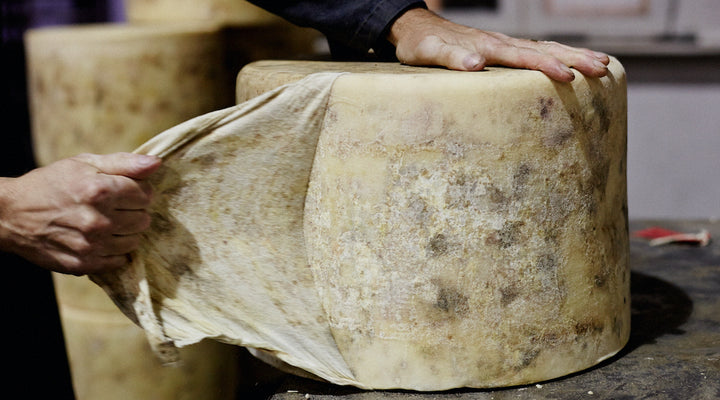Farmers and cheesemakers have the privilege of working to create wonderful foods with the resources of our beautiful planet.
We start with the soil, that remarkable substance that underpins life on our planet. Compare it with the regolith, the rocky soil of Mars, rocky trash, and you see our soil’s miraculous complexity. It has the minerals, the rocky part, and organic matter – the residue of millions of years of life. Together that builds the structure of super-connections of a well-working soil, that allows air and water to dwell in the soil and flow freely through it. It is the home for the extraordinarily complex universe of life from the smallest microbes to the mighty earthworms who roam through the soil, consuming the rotted detritus of the soil, miniature versions of the worms of Dune. The energy source for this universe is our sun. The way the soil life gets that energy is from the plants that grow on the surface which take the sun’s energy and carbon dioxide and turn it into sugars. Plants swap that food with minerals from the fungi that live on plant roots. The fungis’ mycelia, long strands questing through the soil, give it a structure and acquire the minerals the plants need, and at the same time provide a communication web like the roots of the Hometree in the film Avatar. The whole life of roots, animals, microbes and fungi work together as a wholly self-sustaining community which is what feeds all land-based animals and drives much of the carbon, water and nitrogen cycle.
This remarkable and unknowable complexity doesn’t on its own give us food, it gives the plant of the wilderness. We humans ask it to feed us the foods we love and sustain us. While indigenous people may have a religious sense of the wholeness of the soil, us scientifically minded people have had a simplistic view of how the soil works. ‘Soil is the stuff plants stand up in, you turn it over to destroy all life you don’t want, put in the seeds of what you do want, and give them the human made fertiliser they need to to grow. You extract the nutrients you want when you harvest, and then replace them all next time round’. We ploughed, destroying the delicate structures of the soil, added nitrogen fertiliser that out of balance burns the soil organic matter like coal, and have turned the structure of soil into flaccid, blocky stuff lacking connectivity. That way of farming turns soil into what we thought it was, just the thing that the plants stand up in that you have to pummel into submission to give us food. That’s why there is the opinion we have only 60 harvests left in the world. From what we now understand, if you keep using soil like it’s a mine, you will eventually run out of life and turn the soil into something like a Martian regolith.
And we are now learning some humility in the face of the natural wonder of soil. My best understanding is the principles of regenerative farming, a new buzzword. They are a constant soil cover of plants to protect the soil and to feed the soil life. Like nature, grow lots of diverse plants not a monoculture. Like us, soil needs more than one source of food to keep healthy. Minimise soil disturbance to look after the delicate food webs, like in nature where soil is disturbed by animals like moles and rooting animals, only less often than our routine cultivations. Ruminant animals (animals that can digest the fibres humans can’t) harvest the plants and put them onto the soil as manure to feed the life under the soil and give diversity of microbial life. Excitingly, it gives us a way to manage soils so they produce fewer greenhouse gas emissions. In this view, those are nutrients lost from the soil life, going up to the atmosphere where they change the climate. Soils working well hold these gases for their soil food value. Healthy soils are lower greenhouse gas emitters.
In this view, healthy soils need grazing animals. Those grazing animals digest the plant fibres in their amazing rumens, those fermentation vats that give cows their big bellies and all those burps that give methane. Again, we have used a simplistic view of how ruminant digestion works. ‘Put nutrients in, animals will give you meat, milk, sustain themselves and breed’. We now know there is another unknowably complex microbiome in the cow’s (any ruminants’) rumen. The rumen fermentation depends on for instance how much the animal salivates and that saliva goes into their rumen, how fast the feed goes through the rumen, or how much grazing or maize or chain length of fat, protein or sugars. From all we are learning, we have a choice about milk or meat that is more or less healthy, or excitingly, produces more or less methane. Methane is the big deal for ruminants for their burps’ impact on climate. It’s also in energy terms expensive for the animal. It’s how they deal with by products of digestion from a particular family of bugs. We now understand that some animals have different bug families in them that produce a lot less methane and make better use of their feed as a result. The exciting thing is you can breed (and we already are) for these strains of cows. The sweet spot is that our ruminants produce the meat and milk that is good for our health and eating pleasure, we use their manure to feed the soil life, and we reduce the environmental cost of doing that.
For our cheese, we ferment the cows’ milk with some lovely heritage starter cultures that serves the milk by turning lactose into lactic acid. These were collected from the best cheese dairies in SW England in the 1960’s and 70’s from natural whey starters. That puts back into the milk the raw milk bugs that naturally and deliciously sour milk in raw milk. In most big dairies, they use a handful of specific bugs that reliably produce the same flavour in the same time every day, really suitable for machine production. Our starters, by contrast, have an uncharacterisable myriad of microbes, a whole interacting community that is subtly different every time, and where all the different bugs leave a different enzymatic trace on the maturation. The benefit to us is greater complexity of flavour in cheeses made from these heritage starters.
As the cheese matures, all of those different enzymatic traces left from the starter bugs start their magic, giving flavours that unfold in your mouth. One of the most cheering bits of scientific research I read was that in artisan cheese, the maturation pathways become so complex, they become untrackable, unable to be replicated artificially.
On a rinded cheese like ours, the rind itself starts to impact the flavour and texture (which gives the way the flavour unfolds). While every clothbound cheddar around the world will, as if by magic, have the same species of bacteria and yeasts and moulds on them naturally from the similar environments we all set up, scientists have now discovered that each farm has its own unique set of subspecies. That is what gives the characteristic horseradish notes to the flavour of our cheese, and the other flavours from other naturally created rinds from other farms. The rich microflora of the rind goes to work during maturation right to the heart of the cheese at different rates further from the rind. Industrial cheese is made in a plastic bag, so can’t experience this transformation of the interaction of farm and cheese and time to make those final glorious flavours and textures you experience in your mouth. With a rinded cheese, remember to cut from nose to rind so each slice contains all the complexity it can. That is what you are paying for with these handmade cheeses.
As a farmer and cheesemaker, I have the profound privilege of dancing with these extraordinary processes to produce wonderful food, that honours the people, animals, plants and soil that go to make it, and to spend a lifetime grappling with the humbling complexity of our beautiful world. I hope you enjoy the flavours and textures all the communities of life from people to soil make possible.
Mary Quicke

